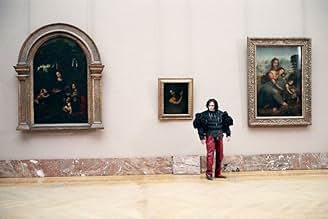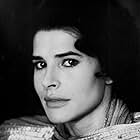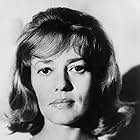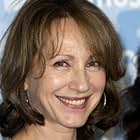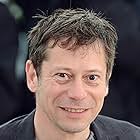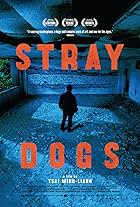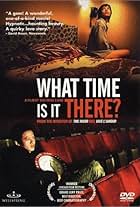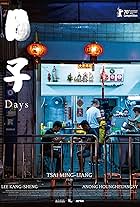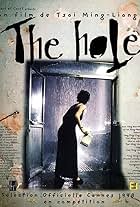Hsiao-Kang, a Taiwanese film director, travels to the Louvre in Paris, France, to shoot a film that explores the Salomé myth.Hsiao-Kang, a Taiwanese film director, travels to the Louvre in Paris, France, to shoot a film that explores the Salomé myth.Hsiao-Kang, a Taiwanese film director, travels to the Louvre in Paris, France, to shoot a film that explores the Salomé myth.
- Awards
- 5 wins & 7 nominations total
Yi-ching Lu
- Kang's mother
- (as Yi-Ching Lu)
Chen Chao-jung
- (as Chen Chao-rong)
- (as Chao-jung Chen)
- Director
- Writer
- All cast & crew
- Production, box office & more at IMDbPro
Storyline
Did you know
- ConnectionsReferenced in Fleurs dans le miroir, lune dans l'eau (2009)
Featured review
I saw this film during a festival in which all of Ming-liang Tsai's feature films were shown over a two-week period. Tsai and Kang-shen Lee were in town for some of the time, and came to the showing to give an introduction, through a translator of course. They spoke for a few minutes about themselves and their relation to the film. Perhaps indicative of Tsai's small fanbase, only 40 people attended even though the room could easily hold 150. It felt quite special to see the two together on stage in such an intimate setting.
Kang-shen Lee started off, recalling that Paris was very cold when they were filming there, and that they ate really good food every night. Each course might take half an hour, whereas when filming in Taiwan they would just chow down a bento box. He also fondly remembered having his picture taken with the Mona Lisa without other visitors around, a perk of filming in the Louvre. He explained that in the film, he played Ming-liang Tsai.
Ming-liang Tsai's remarks went deeper. He said that when he saw Truffaut's 'Les quatre cents coups', just after he moved from Malaysia to Taiwan, it really opened his eyes. When he was in Paris filming 'What time is it there' he contacted some of Truffaut's actors, which is how Jean-Pierre Léaud got to play a small role in that film. As a young man, Tsai had never imagined one day working with Léaud. For 'What time is it there', Tsai had Kang in Taiwan, and Léaud in Paris. For his film he got the two actors together. He also said filming was a very happy time for him, feeling the close proximity to the Louvre.
Tsai went on to explain that 'Visage' is really a self-portrait, a film about his innermost emotions. Almost apologetically, he said it would be a difficult movie to understand because of that. But, he said, he realizes most of his films are hard to understand.
Knowing that the film is essentially a self-portrait gave it a lot of context. It is indeed a film that is hard to grasp. Yes, there is a story, but more than that is it a collection of imagery and symbolism that is very meaningful to Tsai himself. He probably made the film much more for himself than for any audience. Armed with this knowledge, I could easily give up trying to understand the film, and just experience it as a view into the man.
The film contains themes, symbols and imagery that I have seen across his body of work. To name a few: Water running, leaking, dripping. Tape to shut out light. The death of a parent. Sex, implied incest. A fishtank. A cooking pot. Very specific shots of a typical high-rise apartment in Taiwan. There were other free-form scenes that no doubt are very personal to Tsai.
Also, there was a very interesting moment during the showing. At a point, there is a tracking shot of an actor, who is half submerged in water in an underground tunnel. The shot is in black and white, there is no sound. As the camera tracks, it stays trained on the actor. The camera rig moves sideways, in between the light source and the actor, so the cameraman becomes visible as a shadow superimposed over the actor and the wall behind. It felt like being pulled backwards, away from the action, towards the cameraman. At this moment, a spotlight was illuminated in the back of the theatre, in the same line as the camera and actor. It felt like being pulled further backwards, out of the film and into the theatre. It was amazing how the focus of my attention was shifted from the actor, to the camera, to the audience, because it was so unexpected. After a few seconds the light dimmed again and the film continued normally.
I don't know if I would recommend this film to anyone, unless they want to get a look into the maker's head. I think films such as 'Stray Dogs' or 'Vive l'Amour' are more enjoyable, but as with all of his work, you really have to be into slow cinema to enjoy them.
Kang-shen Lee started off, recalling that Paris was very cold when they were filming there, and that they ate really good food every night. Each course might take half an hour, whereas when filming in Taiwan they would just chow down a bento box. He also fondly remembered having his picture taken with the Mona Lisa without other visitors around, a perk of filming in the Louvre. He explained that in the film, he played Ming-liang Tsai.
Ming-liang Tsai's remarks went deeper. He said that when he saw Truffaut's 'Les quatre cents coups', just after he moved from Malaysia to Taiwan, it really opened his eyes. When he was in Paris filming 'What time is it there' he contacted some of Truffaut's actors, which is how Jean-Pierre Léaud got to play a small role in that film. As a young man, Tsai had never imagined one day working with Léaud. For 'What time is it there', Tsai had Kang in Taiwan, and Léaud in Paris. For his film he got the two actors together. He also said filming was a very happy time for him, feeling the close proximity to the Louvre.
Tsai went on to explain that 'Visage' is really a self-portrait, a film about his innermost emotions. Almost apologetically, he said it would be a difficult movie to understand because of that. But, he said, he realizes most of his films are hard to understand.
Knowing that the film is essentially a self-portrait gave it a lot of context. It is indeed a film that is hard to grasp. Yes, there is a story, but more than that is it a collection of imagery and symbolism that is very meaningful to Tsai himself. He probably made the film much more for himself than for any audience. Armed with this knowledge, I could easily give up trying to understand the film, and just experience it as a view into the man.
The film contains themes, symbols and imagery that I have seen across his body of work. To name a few: Water running, leaking, dripping. Tape to shut out light. The death of a parent. Sex, implied incest. A fishtank. A cooking pot. Very specific shots of a typical high-rise apartment in Taiwan. There were other free-form scenes that no doubt are very personal to Tsai.
Also, there was a very interesting moment during the showing. At a point, there is a tracking shot of an actor, who is half submerged in water in an underground tunnel. The shot is in black and white, there is no sound. As the camera tracks, it stays trained on the actor. The camera rig moves sideways, in between the light source and the actor, so the cameraman becomes visible as a shadow superimposed over the actor and the wall behind. It felt like being pulled backwards, away from the action, towards the cameraman. At this moment, a spotlight was illuminated in the back of the theatre, in the same line as the camera and actor. It felt like being pulled further backwards, out of the film and into the theatre. It was amazing how the focus of my attention was shifted from the actor, to the camera, to the audience, because it was so unexpected. After a few seconds the light dimmed again and the film continued normally.
I don't know if I would recommend this film to anyone, unless they want to get a look into the maker's head. I think films such as 'Stray Dogs' or 'Vive l'Amour' are more enjoyable, but as with all of his work, you really have to be into slow cinema to enjoy them.
- How long is Face?Powered by Alexa
Details
- Release date
- Countries of origin
- Official site
- Languages
- Also known as
- Face
- Filming locations
- Production companies
- See more company credits at IMDbPro
Box office
- Budget
- €3,875,000 (estimated)
- Runtime2 hours 18 minutes
- Color
- Sound mix
- Aspect ratio
- 1.85 : 1
Contribute to this page
Suggest an edit or add missing content





